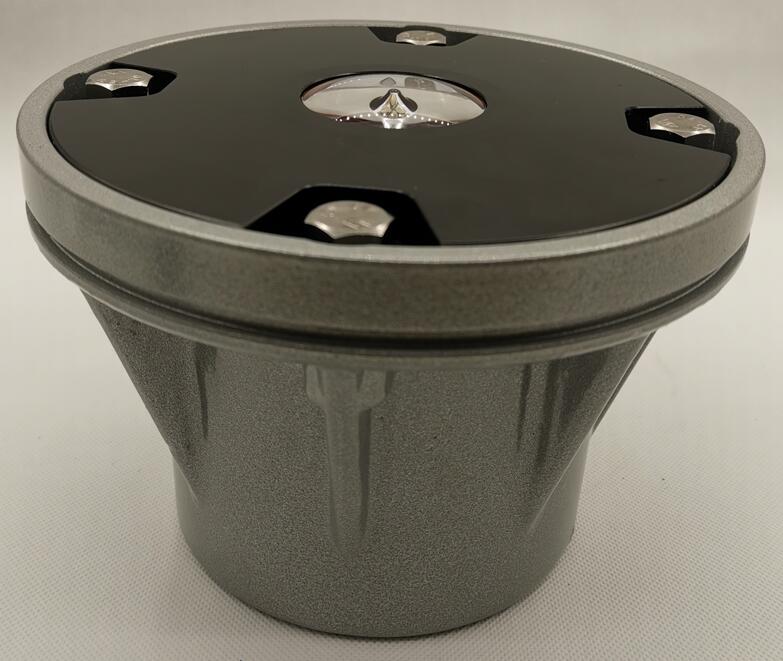The Illuminated Landing Zone: Engineering Safety with a Helipad Lighting System
In the realm of aviation, few operations are as demanding as landing a helicopter. Confined spaces, limited visual references, and frequently adverse weather conditions demand unparalleled precision from pilots. To facilitate safe landings and takeoffs in these challenging environments, a meticulously designed helipad lighting system serves as an indispensable visual aid. More than just a collection of lights, this system is a fully integrated language of illumination, engineered to define space, indicate hazards, and guide pilots through every critical phase of operation, from final approach to touchdown and eventual departure.
The foundation of any effective helipad lighting system is its ability to clearly define the landing area's boundaries and identity. This is primarily achieved through perimeter lights and a prominent helipad identification symbol. Typically, green perimeter lights outline the usable touchdown area, providing a clear visual box for the pilot. At a hospital, a giant white "H" is universally recognized. For offshore helidecks or urban settings, a unique identifying letter or number is often displayed. This immediate visual confirmation is crucial, especially at night or in low visibility, ensuring the pilot has positively identified the correct landing site before committing to the approach.
For the final phase of the approach, specialized lighting provides critical glidepath information. The most common and vital component in this category is the Helicopter Approach Path Indicator (HAPI). This system projects a color-coded light signal: a steady green indicates the correct glidepath, amber suggests the approach is too high, and red warns of a dangerously low altitude. This simple, intuitive system allows pilots to make instantaneous corrections without needing to interpret complex cockpit instruments. For helipads serving hospital or offshore operations, this guidance is non-negotiable for safety.

Given that many emergencies occur at night or in poor weather, effective illumination of the touchdown area itself is paramount. Floodlights are a standard part of a comprehensive helipad lighting system, strategically placed to eliminate shadows and provide even, glare-free lighting across the entire landing surface. This allows the pilot to visually assess the landing zone for any debris, obstacles, or surface irregularities that could pose a risk during landing. The lighting must be bright enough for safety without causing disabling glare or blinding the pilot, a balance achieved through careful optical design and placement.
To ensure safe maneuvering around the helipad, obstacle and obstruction lighting is mandatory. Any structure near the flight path—be it a communications mast, a building parapet, or wind equipment—must be fitted with red obstruction lights. These constant or flashing beacons make hazards visible from all directions, allowing the pilot to maintain a safe distance. This aspect of the helipad lighting system is often governed by strict aviation authority regulations to prevent collisions and ensure a clear approach and departure path.
For ground personnel and pilots, a clear indication of the system's status and wind direction is vital. A status light, often a simple red/green beacon, signals whether the helipad is active and safe for landing. A wind indicator, such as a illuminated wind cone or tetrahedron, provides real-time wind direction and velocity. This information is critical for the pilot to plan their approach and departure into the wind, maximizing aircraft performance and control during the most vulnerable phases of flight.
Modern helipad lighting system designs heavily favor Light Emitting Diode (LED) technology. LEDs offer significant advantages: they consume far less power, have an exceptionally long lifespan, and provide superior reliability compared to traditional incandescent bulbs. Their rugged solid-state construction makes them resistant to vibration from rotor downwash. Furthermore, LEDs offer rapid startup times and can be integrated with smart control systems for automated operation based on time of day or ambient light conditions.
| helipad lighting system |
The control and power management of the system are its operational heart. An automated control panel allows for remote activation, often via a pilot-activated radio handset or a timer. Given the critical nature of the lights, a helipad lighting system must include a robust backup power solution, such as an uninterruptible power supply (UPS) or batteries, to ensure functionality remains intact during a mains power failure. This redundancy is a core safety principle, guaranteeing the lights are available when needed most.
A well-engineered helipad lighting system is a complex and vital safety ecosystem. It transforms an otherwise undefined area into a clearly marked, intelligently illuminated landing zone. By integrating perimeter, guidance, flood, and obstruction lighting into a cohesive whole, these systems provide pilots with the critical visual information required to execute safe and precise landings in all conditions. As helicopter operations continue to expand in medical, commercial, and emergency services, the role of these sophisticated lighting systems in safeguarding lives and assets will only become more pronounced.
